For every comic you’ve ever touched that someone else got upset about, that contained a story that was a little beyond the pale by normal comics standards, or simply made it through the days of the comics code unscathed, there’s a pretty solid chance that there’s one man to thank: Denis Kitchen. From helping to found the underground comics movement in America as we know it in the 1960s to publishing countless talented creators through his iconic company Kitchen Sink Press, helping give voice to marginalized creators, and generally bolstering the comics medium as we know it through fair and careful curation, there are few things in the industry that Kitchen hasn’t touched in some way or another… and made better as a result.
If you’ve read this site for longer than five minutes, it’s pretty clear to see that Denis Kitchen is one of those people in comics that has not only struck an chord with me personally with his ethos, but has helped to shape the way in which I view comics history as a whole — through a careful lens of caring in the now, and an unquenchable need to learn more about where it all comes from, for better or worse. What better way to pay homage to that then by talking to the man himself.
After our initial meeting at New York Comic Con of this year, I was fortunate enough to stay in touch with Kitchen and conduct this interview over Zoom last week.
How was Lucca? I know you just got back from Italy not long ago.
It was wonderful. Only five days. I wish it were a couple of weeks instead of a few days, but it was great.
When you do international shows like that, do you bring any of the American underground comix like what you were doing at New York [Comic Con]?
Oh, I don’t exhibit. No, I was there as a guest and did some panels and events. I curated a Will Eisner exhibit for them last year. I was going to go the year before as well but because of COVID my wife and I couldn’t go.
Of course. The case for so many things, right? Is doing panels different over there?
Well, generally, yes, because I don’t speak Italian, so there has to be a translator. It just slows things down a bit. It always seems to be really well-attended and the fans are super knowledgeable. The questions for the Will Eisner panel were all very smart. But yeah, it just takes twice as long [laughs]
Well internationally or not, I wanted to kick this off with something that’s probably relatively basic but seems like a broad place to start considering the breadth and depth of your career. Do you still like comics?
Hm..
I mean, you’ve worn damn near every hat in the business. Even for one person who wears one or two of them during the course of their career the answer is often a “no” by this point. [laughs]
No, that’s actually a good question. I’m very jaded about mainstream comics in general I think. I haven’t read a Marvel or DC comic in more years than I even would guess. They just don’t interest me. But I’m always on the lookout for good graphic novels, something by generally younger creators. I get a lot of recommendations, and the one I’m in the middle of right now is Noah Van Sciver’s Joseph Smith’s Mormon story, and otherwise I’ve just got a stack of graphic novels. My daughter gave me a copy of Gender Queer that she recommended, and the CBLDF of course, was defending that one.
Of course, yeah. Y’all played a big role in keeping that on the shelves.
Right, exactly. So I have a special interest in it. That’ll probably come up next. I was at SPX this year, and I bought three or four things that looked interesting. They’re all on the table next to my lounge chair, but I don’t read as much as I used to when I was really actively in the business and publishing. Back then it was a never ending stream. And the other factor is, as you know, there’s so much coming out today, you can’t possibly stay on top of all of it. I do look for reviews though, and references from people I trust. In Italy, I bought two or three books that were more visual just from browning the show floor, so the library’s always expanding. I definitely still love the medium after all these years. So, except for not looking for a new Spider-man or X-Men, I’m good.
I was about to say, how do you keep that relationship fresh? Because honestly, it is hard to pick up a Marvel or a DC book right now and find something that’s really engaging in a way that many graphic novels and independent comics are. Does browsing shows rejuvenate that more than shopping in a bookstore or comic shop?
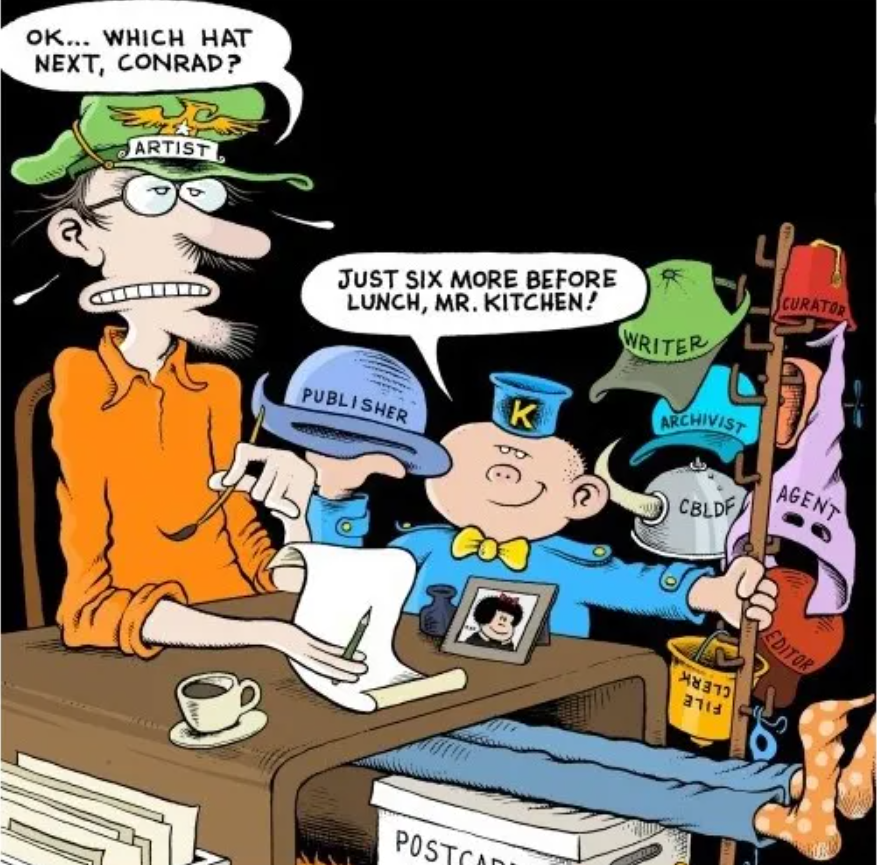
Well, yes. If I go to a bookstore, they tend to be dominated by the major publishers. And again, I don’t want to denigrate people’s favorite superheroes but they just don’t speak to me. When I was in college, I was hooked on them, but tastes change and evolve. They’re very different stories now.
So with that relationship kind of evolving then… what’s your key role right now? I know that’s something of a broad question.
Well, I’m trying to come full circle back to drawing and writing, and I’m semi-succeeding. [laughs] I’m slowly kind of extricating myself from other commitments. As an agent, I still have clients who I represent and advise, and slowly that’s changing. So, I have a new book that’s literally on a boat coming from China now called Creatures from the Subconscious, and that is from Tinto Press in Denver. It collects a lot of what I call chipboard drawings. A chipboard is that on the bottom of a notebook, it’s the cardboard kind of paper at the bottom here. I’m always flipping over notebooks and drawing on that part…so I finally bought a carton of just plain chipboard from a printer.
You can do that?!
Well sure! You can buy any kind of paper, right? Well, if you want a carton, they’ll just sell it to you. But I love that surface. I’ve been doing it for many years. I don’t know anyone else who loves it like I do. But anyways, I start with a Sharpie marker and no thought whatsoever of what I’m going to draw, and a few lines appear and suddenly it just evolves in a way that’s personally satisfying because spontaneity is the key. If I were drawing a comics page on an assignment, I would have my illustration board and pencil it all out and letter it carefully, and then finally ink it and it would be fine because that’s the formal way of doing it. The chip boards are the opposite. They’re very liberating, and I never know what’s going to come out. I’m not sure I’d want a psychiatrist to look at them though [laughs]
That’s why they’re called “creatures from the subconscious,” though, because more often than not, they are creatures of some kind. Sometimes, they’re regular humans, but the humans have horns, and things like that. I never know where it’s going to go. So, that’s one aspect. I’m also working on a couple of books. My youngest daughter, Violet, and I did a book a couple years ago for beehive books about Harrison Cady, a now largely forgotten illustrator, who we both love and thought deserved to be rediscovered. So, we’re following up on that with one on another guy, also largely forgotten, Boris Artzybasheff. And for any of your [audience] who aren’t familiar with him, if you do a quick Google search, I think you’ll go, “Wow,” because it really is amazing.
He was an illustrator-slash-cartoonist-slash-surrealist who did the absolute best anthropomorphic machinery of anyone ever. I don’t think anyone can touch him. He’s probably most famous for stuff he did during World War II. He did a lot of Anti-Axis cartoons, and he also did scores of Time magazine covers that were portraits of famous people, but they’re really also unusual, because the backgrounds often were kind of surrealistic and just very inventive in a way that the average boring Time magazine cover would not be. He always brought something extra to what he did, and he’s got a fascinating backstory. So, we’re writing his monograph. I’m also working on a book about the Nancy cult… well, the Ernie Bushmiller cult –
Which is still miraculously strong!
It’s amazing, isn’t it? It’s multi-generational, so it’s hard to exactly explain what’s going on, but there is something going on. I’m sure of it. So, anyway, I keep busy, Chloe.
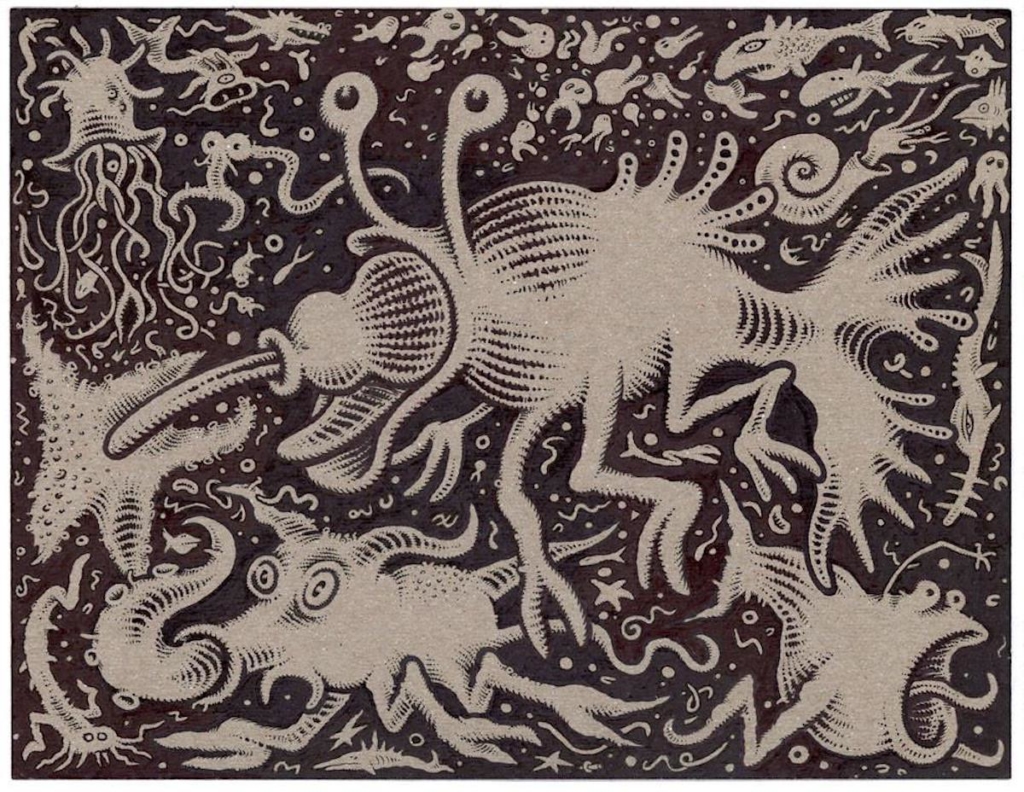
I can see that! Talk about a full workload.
Every day is fresh, and in a way it’s good to wear several hats because you don’t fall into a rut. There’s always new directions, new challenges, but I am trying to slow down now that I’m getting kind of ancient. [laughs] I’m trying to smell the roses, too.
Going back to drawing on chipboard for a moment… it’s kind of funny you say that you just make a lot of markings until something happens. I’ve actually heard similar things from several other artists recently. As someone who’s brain just does not work like that, I’m kind of fascinated. The idea of letting the subconscious just sort of fall out like that… it almost ties back to your roots with the Underground. Is that something that still resonates with you a lot, making sure that creating something where your id can flow through?
Well, speaking for myself, yes. You have to put yourself in a certain state of mind. I know other artists can do that. Some don’t or don’t try, but even doodlers can do it. I mean, you might say you can’t draw, but you might find – if you are in the right state of mind – your doodling will take unexpected directions. But you have to be in that … I’m not sure what to call it… a zen state or something? [laughs] I do it so often now it just comes naturally. But I think for anyone starting out you may have to just free your mind in a way that a lot of other people might have to put some effort into, but I think it pays dividends.
The underground cartoonist is still there long after Underground comix have ceased to exist as they were, they’ve evolved, as you know. But the kind of person who went into Underground comix is probably the kind of person who was already unconventional or seeking an unconventional route. And that’s not something tied to any particular generation, I don’t think. I mean anybody – no matter what age you are – can say, “I’m not going to think mainstream. I’m not going to do what people expect of me. I’m going to do whatever I want to do.” Now, usually, you can’t make a living doing that. Even back in the Underground comix days, it wasn’t easy to make a living at it if your name wasn’t Robert Crumb or Gilbert Shelton. That’s why I quickly became a publisher. So, I never stopped being a cartoonist, but I had a wife and children and–
You gotta find a way to pay the bills! Tale as old as time for artists.
Absolutely, and publishing was the way I was able to do that. But I think it’s the most rewarding if you’re able to do that. And if you can’t do it for a living, at least you can do it in your free time or part-time. So, there shouldn’t be any excuse if you say, “Well, I can’t just let it all go and let my id explode, for better or worse.” I think everyone has free time, and you can experiment, and you never know what might come out.
Speaking of what comes out, you’re very much a champion for these older works that hone in on that skill. When you’re looking for things to curate and bring back into the spotlight, what exactly makes for good curation for you? It seems like you’re willing to do it for anyone who’s willing to try… your style of curation is more about the abstract thought behind making sure everyone has a voice in creating this kind of art and less about personal taste.
It really is a combination, Chloe. You can’t eliminate your personal taste, but if I’m curating –-whether it’s literally an art exhibit or it’s curating an anthology or anything else where you have to select –if you don’t have personal taste, there’s probably something wrong and you shouldn’t be curating. But at the same time, you know, you have to think about the audience. I guess there’s no easy, quick answer to that. I try to take each of those opportunities seriously and give it a lot of thought. I mean, I think that’s the only responsible thing to do, right?
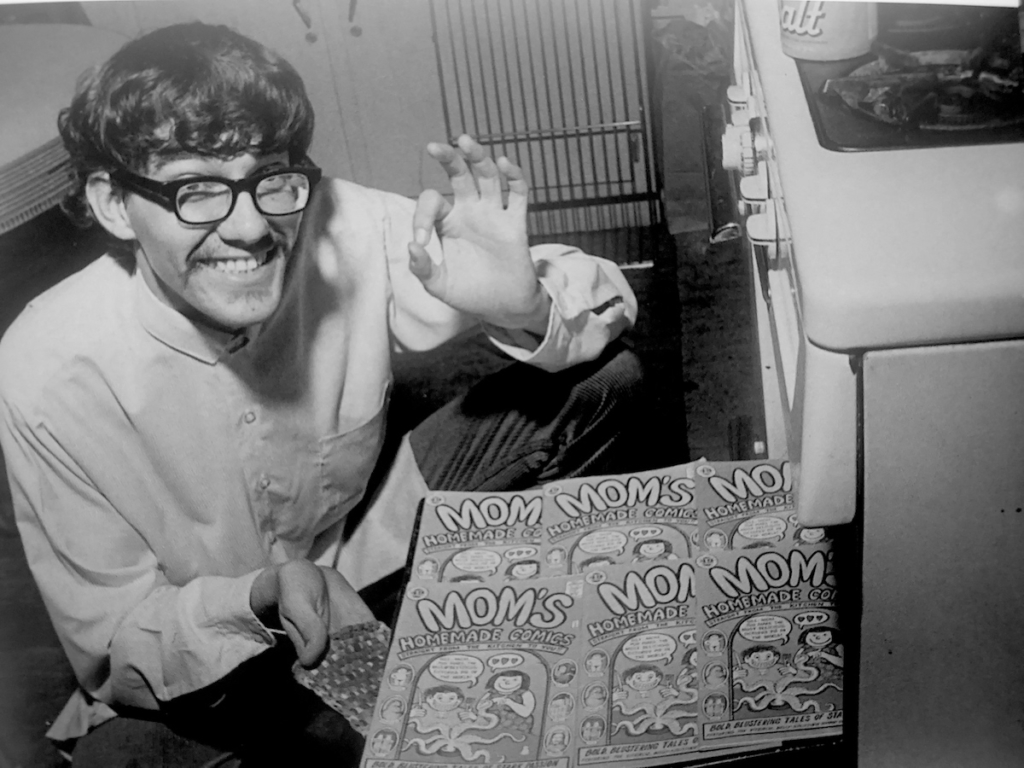
Sure, of course.
I mean, here you are curating guests for your website. We all curate. When I go to dinner, I’m curating the menu. You do your best with the choices you have, and not to make light of it, but when I first started doing this, and the first time I think I realized, “Oh, I’m getting credit as a guest curator or whatever,” that’s one of those words that’s kind of rarified because you think the fine art museum curators, and it’s a pretty snooty, highfalutin crowd. But the truth is it happens on many, many levels. In the comics field in particular it’s pretty rich, so, if I’m doing an exhibit, I find it a great challenge, and also, it’s a great deal of fun. But then also, if you do an exhibit and maybe the crowd is grumpy, maybe you guessed wrong or your choices were unpopular, that doesn’t happen very often, but it gets down to you please everyone. You’ve got to basically trust your instincts.
In that case, how difficult is it to exhibit or curate or collect the particular creators that you do for the audience that is the primary viewer now? Is that increasingly difficult?
Well, I would say yes, just because now it’s more political. You can’t escape the fact now that let’s say I’m asked to put together a show for some college in six months. There’s definitely going to be an expectation that there’d be a sufficient number of women, people of color, LGBTQ people, and other variables that I wouldn’t have thought about 10 years ago when I did a show. And of course I would have still included all of those groups ten years ago regardless, but it wouldn’t have been with the kind of conscious pressure that you have now.
I used to do shows for the Society of Illustrators, for example, and with each passing year, not naming names, I would be told, “Well, make sure you check off the list.” I don’t like that, even though I understand that these things need to be more diverse and it’s making up for the time when everybody was pretty much a white guy. I get that, absolutely, but at the same time it takes the pure curation out of it because suddenly there are asterisks, and you’ll be second-guessed if you seem low on some area where you were expected to do more. It just complicates things.
I get that, I think. I’m sure it can be limiting when you’re trying to base things solely off of the merit of the history in relation to the art.
Yeah, but I also understand, you know? For a long time, comics was a field that was dominated by men, and generally white men. And there’s a lot of reasons for it. I remember talking to Trina Robbins about this exact thing one time, and she said when she was in high school and she wanted to pursue cartooning, her advisors, teachers, friends, they all said, “No, no, no. You should go into fashion design. That’s what women do. Comics are not for young women.”
So, it was a perception that was shared by the entire culture, and so you had to overcome that pressure. I remember meeting Dale Messick, the cartoonist who did [Brenda Starr, Reporter], and she had to change her name from Dalia. Dale was a male author name in the same way a famous female author in England changed her name to George a century or so back. [editor’s note: George Eliot, who was originally Mary Ann Evans.]
Oh sure, sure. There’s so many women assuming male pen names throughout publishing history.
Exactly. So, the point is that you have to recognize the voices that haven’t been heard sufficiently in the past. Probably – hopefully – at some point, our society will be such that you don’t have to think so consciously of it. That’s what we’re all striving for.
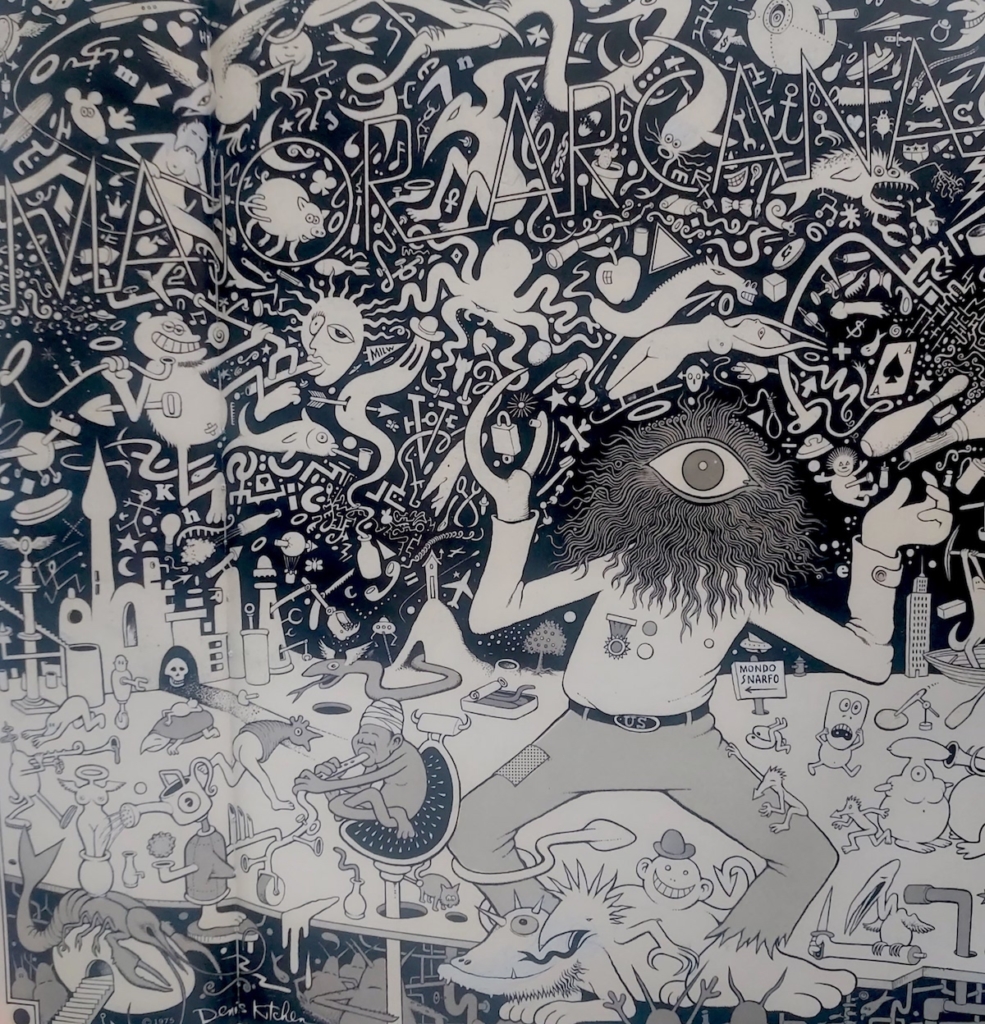
I’m sure that in itself is difficult on a new level. You’re wanting to present the work for what it was in the time period that it exists in while still being conscious. Feels like you’re going to be butting heads with someone no matter what.
Right.
So how do you reckon with that? Putting out work that can really be difficult to come to terms with in its own context – or, for that matter, work that’s often really difficult to teach about right now.
Yeah, it’s tough. I mean, I’ve not been in the academic area, so I can’t really speak to any personal experience there, but I know it’s the same kind of politically-charged arena that we have in the other areas we’re talking. Phoebe Gloeckner, as you know, is a perfect example, who brought up Robert Crumb in teaching her comics course and came under fire, and it’s a controversial incident. I mean, Crumb is always kind of a lightning rod when you talk about these things because he’s a guy who, you talked about the id earlier, he has no lid on his id, so to speak.
Sure, that’s kind of his whole deal.
I mean, I know Robert well. I don’t believe he is a racist. I don’t believe he’s inherently a misogynist. He certainly has healthy relationships with his wife, his daughter, and other women. The things he draws inflame some people though. I know my own daughter, Violet – who is an aspiring cartoonist – she will admit that he’s an amazing draftsman, but she will not look at his work because she finds it highly offensive.
As you probably know at SPX maybe three or four years ago, Derf Backderf and Carol Tyler got in trouble when they brought him up as an influence on their career. I wasn’t there, but I understand they were hissed and booed. I don’t like it when there’s an environment when you can’t even talk about who your influences are, or talk about somebody without automatically getting piled on. It’s a touchy and controversial area, but I think like with everything in life you have to have a rational discussion, you know? If you don’t like it, like my daughter, don’t look at it, but there are people who will look at it, enjoy it, because again, Crumb doesn’t just do images that inflame people. He’s also done some extremely thought-provoking, historical, autobiographical work that I think will stand the test of time.
He’s never ever going to be loved by everyone – in fact he’s probably going to be hated by more than he is loved. And again, it’s the test of time. But in the current era, that’s the situation. And I don’t envy the Phoebe Gloeckners of the world who have to teach comics history and be very careful who they can even bring up. I don’t know how you talk about comics history without at least touching on somebody like Crumb for better or worse.
I suppose. It’s a kind of tightrope walk, right? Because it’s so much of wanting to understand where people are coming from and – to an extent – understanding the anger and offense that people get seeing some of these images. But when you put them in context with a bunch of variables or as a genuine piece of satire calling things out for what they were and saying the quiet part out loud…I mean, it’s hard to explain that context against a feeling, isn’t it? It’s hard to make people want to understand it in context, especially when they bring up extremely personal and valid points about some of these comics.
Right. But that’s why we have lots of trigger warning in advance and things like that. If people don’t want to hear about it, I guess they don’t attend the class or whatever. But yeah it’s certainly a societal challenge. I can tell you, as someone who was with the CDLDF from the very beginning, we were very accustomed to defending comics against what I would say are religious zealots and right wingers and just a lot of, generally speaking and – totally using generalized terminology – “the right”. The conservative, the Bible belt, you know. But in recently years –
It’s coming from all sides?
Yes! It’s coming from – again, very generalist terminology – “the left”, as well. Almost as much as the conservative right, the left is where many of the criticism and attempts at censorship are now coming from as well. That’s what worries me the most.
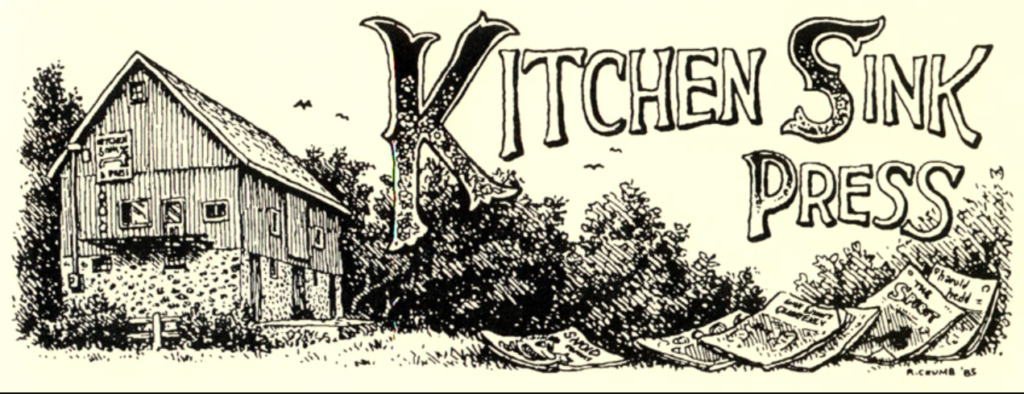
We do have a bizarre wave of puritanism coming from different angles right now, sure. I’ve gotten really into the underground branch of comix history in the last few years and if it’s one thing I’ve noticed in talking to people about them it’s that either you get met with the conservative die-hards who call you a chump for questioning or critiquing anything about it, and you get called a sympathizer for wanting to connect with them and their problematic content at all. There’s an occasional phenomenon of being written off as being a piece of shit for even wanting to bother either way [laughs]
Right, yes. And the underground comix you’re referring to really were actually the opportunity that opened the door to a lot of female cartoonists, people of color, gay cartoonists. That was the beginning of it! So, when you write off underground comix as being sexist, racist, whatever, right from the jump – well, that’s just not the facts. Underground comix were, themselves, widely diverse as were the creators and the topics as they evolved. I suppose it’s easy to get typecast. You look back at any era and you generalize because it’s the easiest way to approach things. But critics of Underground comix on either side should also at least acknowledge that some great stuff came out of it. And perhaps most importantly, opportunities to people who were previously unwelcome in comics.
That’s sort of the nature of that era’s particular rebellion though isn’t it? “Let’s push back”. I mean the queer community alone, even if they couldn’t directly identify with the comics themselves – or were put off by them – could go, “Well, wait a minute. This is pushing back. That’s really important. Let’s do this, too, in our way.” I mean just look at everything Howard Cruse did!
Absolutely! I’m a straight man, but in the late 1970s, I thought there ought to be gay comics, and Howard was the only gay cartoonist I knew at the time… and even that was not something that was even spoken of. Howard was closeted like a lot of his peers. So, when I proposed the idea of Gay Comix to him, he said, “I’d love to see it.” And then, when I said, “Well, would you edit the series?” he was hesitant at first.
First of all, he lived in Alabama, and he made a living as a commercial artist and was rightfully concerned hat he would lose gigs if it became known that he was gay. But he gave it some thought and I remember it didn’t take too long before he said, “You know what? I will do it.” And then the next challenge came when I said, “Do you know other gay cartoonists?” And he said, “No, do you?” [laughs]
Oh no! [laughs]
Yeah, so we kind of sat down and said “So, what do we do next?” So again, in 1979, I believe it was, the game plan we came up with was that I would take my Rolodex and I would send a form letter that he and I would write to everybody in my Rolodex because we didn’t know who else was closeted.
…like a gay Bat Signal?
[laughs] Exactly. And we ended up with 10 or 12 or so artists saying, raising their hand saying that they’d love to be on board. I also got a handful of nasty notes or phone calls back from people – like S. Clay Wilson called me up and said, “Why the fuck did you send me this letter? Do you think I’m a queer?” and I was just like “I don’t know…. are you?”
Always worth asking.
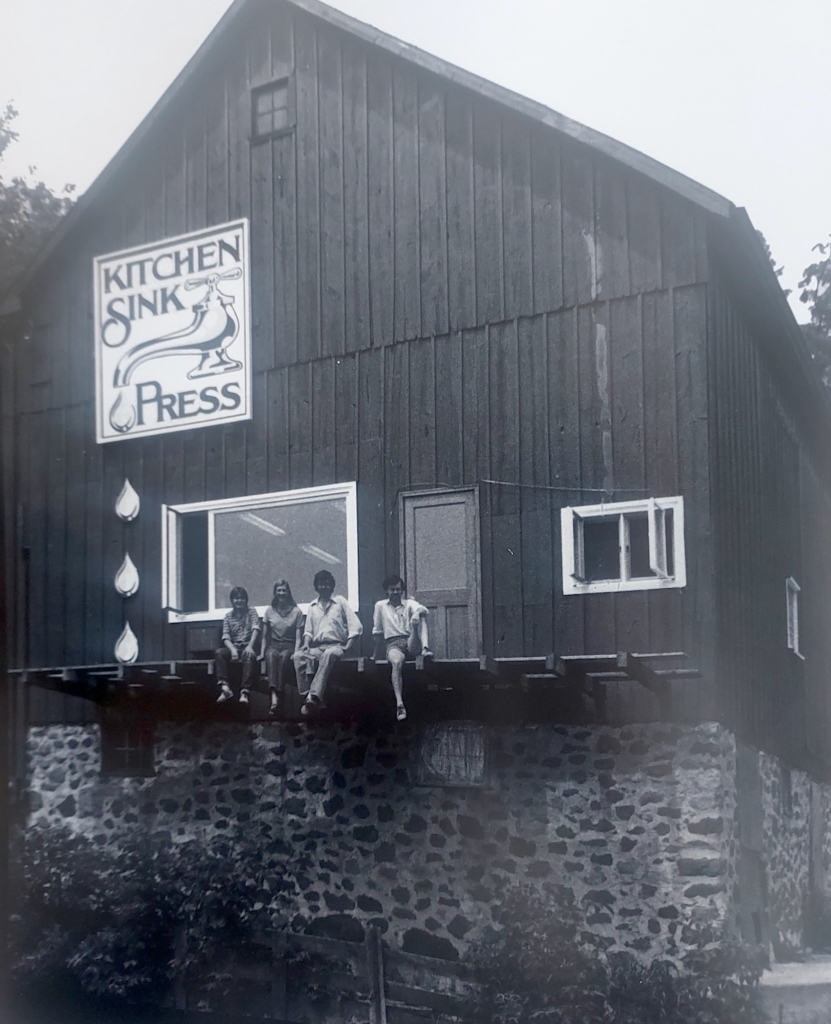
Well, back then, it was kind of awkward because, again, it was just the state of the society. But I think we’ve largely overcome that. And the series ended up then being a magnet itself that attracted gay cartoonists who first discovered the comic, like Alison Bechdel, for example.
Sometimes you just have to instigate something if that’s your instinct. I remember one time back then Trina [Robbins] was complaining to me that the so-called erotic comics we were doing were offensive to her and some other women. I said, “well, why don’t you do your own erotic comics?” And she said, “Oh, great!” And so, we started a new series.
[laughs] That’s kind of brilliant. Everyone gets what they need in their own way, I guess.
Sometimes you have to find a way to make it work. And again, being a publisher who didn’t have to answer to stockholders or anybody – I could just make a decision on my own. It wasn’t a huge-scale business. More often than not, the things that my instinct told me was right to do, also proved to be commercially successful, so, it wasn’t just charity. It was just looking at the market more objectively than others were, perhaps, but it certainly wasn’t charity.
So…how do you go about explaining to people how to be more curious in that way? Because I think that’s such a key factor in what you’ve done and what you still do – you go with your gut and stay curious. How do you teach people how to stay curious in that way so that it’s a trend that can continue on in creating these spaces in comics and creating comics history?
…I’m a little stunned by that question. Hm.
Sorry. [laughs]
No, no. I just..I don’t think we should have to. Maybe you’re right.
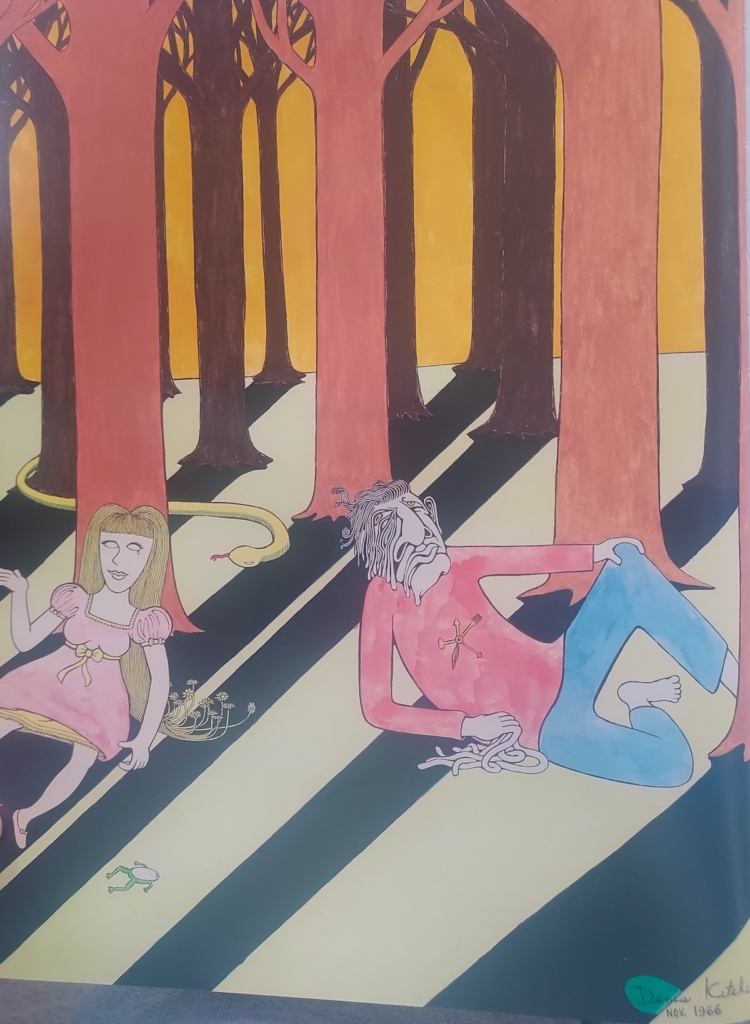
It just seems like it’s not something that’s done in the same way anymore. The passion is there but certainly not everyone is curious.
Is it parenting? Schools? Where does lack of curiosity come from? Aren’t we all naturally curious?
One would think so. The envelope is pushed in some really great ways and is very much now lacking in others.
Yeah, I think for lack of a better term, the current state of culture tamps down on that curiosity because maybe if you’re too curious in some areas, then some of your peers will come down on you. I don’t know. I can’t speak as a 20-something anymore. My own experience comes from a different era, and I’m sure I’ll be criticized for some of the things I’ve already said to you, but I’ve got to speak my mind as well.
Sure. All perspectives are important in these conversations surrounding art.
It’s just like we started to touch on earlier – censorship is censorship. It doesn’t matter which side it comes from. I don’t care if it’s the church or the government or my neighbor telling me what I want to read and see what I want to read and see. And that is also part of natural curiosity. I mean, I occasionally turn on Fox News because I’m curious. I’m usually repelled entirely, but I’m curious because I want to know what other people are hearing. Is that curious or stupid?
I remember first hearing that from Harvey Kurtzman. I went to visit him one time, and he was on an exercycle, and he was watching the Jimmy Swaggart show. And for those who are too young to know, Jimmy Swaggart was a televangelist who actually got busted with a prostitute, and then he cried a thousand tears, and was magically forgiven and welcomed back by part of his congregation. But that’s not the point. The point is, I did not expect to see Harvey watching a televangelist while he was on an exercycle. And so, when he was done, he turned off the TV. And I said, “What’s going on? Why would you watch that?” he said, “I want to know what other people are seeing and thinking.”
Kind of like “I want to see what’s on the other side. I don’t agree with it at all, in any way, but man, I want to see what’s over there”? Like a “know your enemy” mentality?
Exactly. I mean, you may hate the politics or the religious view or whatever, but you got to understand people are people and some of these people may disagree with you, but there’s still a humanity to explore. What makes them think what they think? What is the draw? What are the core differences here and how do you talk about them? Well, you’ll never know if you don’t look at what their influences are. This is, I think, the issue of our day. We’re so fucking polarized.
I mean, I was talking to someone recently who was at a bar and two people were arguing about Trump, and the pro-Trump guy turned to him and said, “What do you think?” And he said, “I was going to jump in, but I realized,” he said, “I didn’t want to escalate an argument. What I would like to have had was a rational argument between two people with opposing views. And that wasn’t going to happen right then with this person.” We need more rational dialogue. Comics are an ideal place for that sort of thing, I think.
You’d think that.
Yeah, sure. But it’s just a medium. And someone was telling me about… What’s that frog that was embraced by the right wing? Pedro?
Pepe the Frog?
Pepe the Frog, yes. So, somebody apparently did a Kickstarter comic a couple years back with that character, and it had a six figure sum, like very quickly.
No shit, six figures?
Yes and it was so demoralizing on one hand because it was lousy art, the politics were extreme and awful, and so on. But it did prove that if you are a right-winger, and you want to do comics, you certainly will find an audience. The cartoonists I know, and most of the comics fans I know are on the left side of the fence…but we don’t own comics.
And now that schools and educators are embracing comics more than ever, it’s a good sign, but it also means there has to be a real carefully curated neutrality, because any educational comic you do has to go through the Texas Board of Education because they’re kind of the gatekeeper for other states.
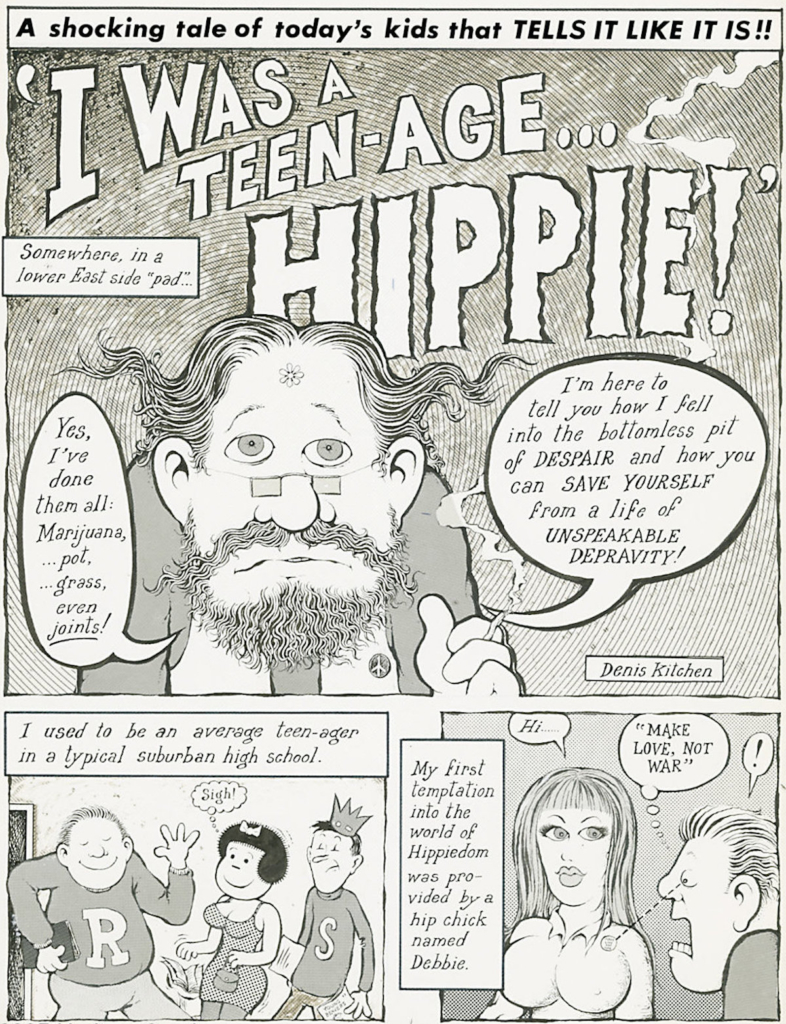
Which is insane.
But that’s the way textbooks work, unfortunately. So, everywhere you look, it comes back again to curation and to the power of comics, and the way they overlap with comics is… I mean, comics and politics is a fascinating area. And I think we on the left side have to get used to the fact that conservatives are going to understand it’s a very effective medium, and they’re going to employ it more and more, too.
That’s kind of been harnessed for ages already hasn’t it? I mean, combining art and text has been around in as far as things like political cartoons for centuries. It seems surprising that it surprises people that it’s something that can be harnessed for both purposes and all sides.
For sure. And you bring up editorial cartoons, which are a distant cousin, but they’re still part of the family. So you perhaps have noticed that editorial cartoonists are dying out. There are fewer and fewer every year. And that’s partly to do with the fact that newspapers are sadly dying.
Sure. Which is incredibly sad.
But there’s also that the newspapers who are desperately trying to stay alive are much more timid about hiring an editorial cartoonist because they’re a very vocal, visible symbol of that paper. If you’ve got a liberal editorial cartoonist and even a quarter of your readership is more conservative, you’re going to go, “Well, I don’t know. That cartoonist isn’t really helping us retain our readership.” So, in a way that we never had to deal with before in journalism or cartooning, editorial cartoonists are probably going to be extinct before long.
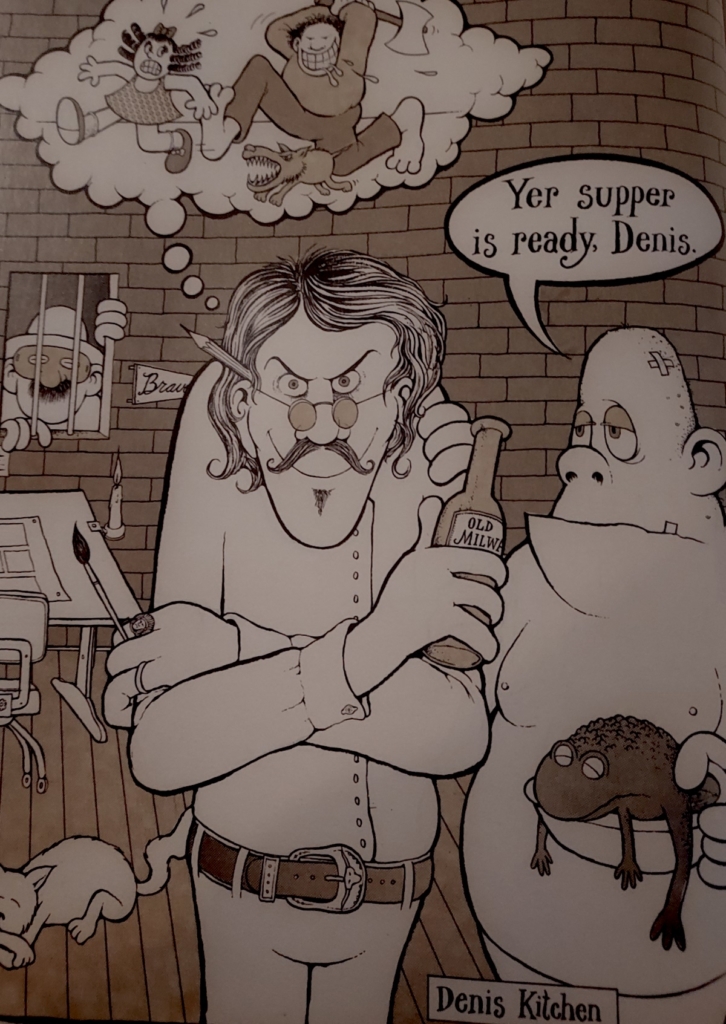
Isn’t that something that will be kind of extended to like zines again? Or indie comics and web comics and things like that? Makes me think of The Nib who still do great editorial cartoons.
Hmm. Perhaps that’s true. Online presence definitely makes a difference. Really, The Huffington Posts of the world need to hire editorial cartoonists. That’s the real answer. To be an effective editorial cartoonist, you have to be extremely topical; you have to do your cartoon for tomorrow’s audience today based on what just happened, generally speaking. That’s a special kind of an artist and a special kind of vehicle. And if it’s not a paper, then it has to be an online counterpart. I just think, again, it’s part of that polarization that’s affecting everything, including our favorite industry.
Looping back really quickly to kind of where we started all of this: does that contribute to part of what keeps you interested in comics, but also what kind of jades you to them?
Well, I’m finding the ones that I probably enjoy the most at this point are well-researched, historical comics like the one I’m just reading about Joseph Smith. I know the basic Mormon story, but I know that Noah grew up as a Mormon, and I know that he did his research very carefully. He’s not a Mormon anymore, but he wanted to be sensitive to that faith, including his own core family. It’s fascinating. And I find myself attracted to the kind of artists who are willing to do that research because it takes them longer. If you want to do something autobiographical, the research is within you. But if you’re doing something about the War of 1812 or something, you have to be a proper scholar or no one will take it seriously.
And I first saw this sort of thing with Jack Jackson, who was one of the Underground cartoonists who did mostly histories of Texas and the Southwest. He was a true historian who was also a cartoonist, and he was highly effective, I thought. I wasn’t particularly interested in Texas history, but he certainly made it fascinating. And we all have a superficial knowledge of, say the Alamo, but all the forces behind it? He showed the Mexican side of that in a way that I hadn’t seen in an American textbook.
He’s another example of if you try to pigeonhole Underground comix. Jackson was doing both science fiction kinds of comics, but he was also doing historical comics that I think will stand the test of time. He’s a guy who influenced, even somebody like Will Eisner, who certainly acknowledged the undergrounds. Like Justin Green was another one who influenced Will. The autobiographical stuff started in the underground, and that seems to be a dominant genre these days. I like a lot of it, although – I mean, correct me if I’m wrong – but I think there are a lot of younger cartoonists who maybe ought to live life a little longer before they tackle autobiography. Not to say you might not have a fascinating life story at 22…
I get what you mean. Everyone has a unique story but in order to write about life it’s important to really live it.
I think so. Anecdotes and short stories from young people are so important and insightful – I have to be careful not to be too broad with this sort of comment. It’s all very important, but so is living before you write about living.
I guess that, too, comes back to that curiosity then, doesn’t it?
Yes. And if there are members of your generation or peer group that you think need some education, maybe that’s part of what you’re doing as a service. It’s important to keep that going. That’s what we do.
